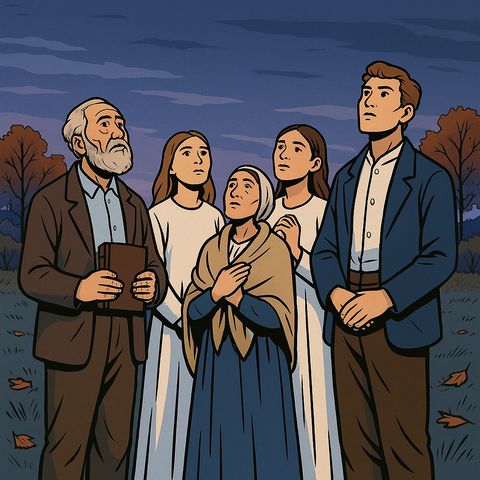
Timeline of Failed Apocalyptic Predictions
Acts 1:6-7 records how, in AD 33, Jesus’ apostles asked him a very important question:
‘Lord, are you going to restore the Kingdom to IsraEl now?’
Jesus replied:
‘It’s none of your business to know the times and periods that the Father has is in charge!’
Unfortunately, not everyone has paid attention to this important message. Over the centuries, thousands of well-meaning people have tried (and failed) to predict the end of the world. Some were being too eager, while others were cranks, and some were scammers.
This timeline documents the more prominent, interesting, or unusual failed apocalyptic predictions throughout history, both Christian and non-Christian.
It includes everything from the second coming of Jesus, to Islamic end-times predictions, and even failed ‘scientific’ predictions about pollution, overpopulation, and the environment.
Date of predicted event, not date prediction given!
The timeline is ordered by the date that the predicted event was supposed to happen, not when the prediction was originally made.
Timeline
AD 66-70
Simon bar Giora and Jewish Essenes
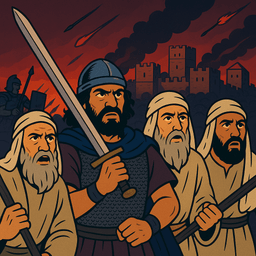
During the tumultuous First Jewish–Roman War, some Jewish groups, including the militant leader Simon bar Giora and perhaps certain members of the Essenes, anticipated the arrival of the Messiah and a miraculous divine intervention that would save Jerusalem.
No such saviour arrived, and the Romans destroyed the city.
After AD 156
Montanus and Montanism

Montanus, a Christian convert from Phrygia, claimed to be a mouthpiece for the Holy Spirit and predicted the imminent Second Coming of Christ.
He, along with his followers Priscilla and Maximilla, established the ‘New Prophecy,’ or Montanism. A central teaching was that the heavenly Jerusalem would descend upon the cities of Pepuza and Tymion (in what is now western Türkiye).
This fervent movement, emphasizing ecstatic prophecy and strict asceticism, ultimately faded as their predictions failed to materialize.
~AD 160
Seder Olam Rabbah’s Chronology

The Seder Olam Rabbah, a Jewish chronicle written around ~AD 160, established a widely accepted Jewish chronology from creation.
This chronology, though later proven faulty, led to interpretations of biblical prophecies, particularly Daniel’s 70 weeks, which then influenced some Jewish scholars to anticipate the Messiah’s arrival and the beginning of the Messianic Era around the mid-2nd century AD.
Such expectations were not met.
AD 365
Bishop Hilary of Poitiers
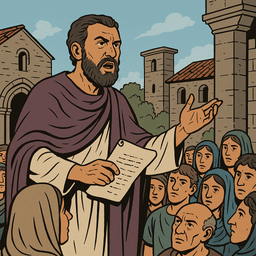
Hilary of Poitiers, a prominent theologian and Bishop of Poitiers, is commonly credited with the belief that the year 365 would mark the definitive end of time. Though it is not certain from his writings that he ever explicitly set this date, many Christians certainly believed he did, and were disappointed when it didn’t happen.
His apocalyptic views were particularly strong in his denunciations of the Arian-sympathizing Emperor Constantius II, whom he considered to be the Antichrist. He wrote:
‘The time for speaking is come; the time for silence is past. Let Christ now appear, for Antichrist has begun his reign.’
Despite the failed prediction, his writings continued to influence Christian thought. It’s worth noting that Hilary also wrote that Christ:
‘…removed from us any need to be concerned about its date,’ as ‘it was established by God that the date of the end should be indefinite.’
AD 375-400
Martin of Tours
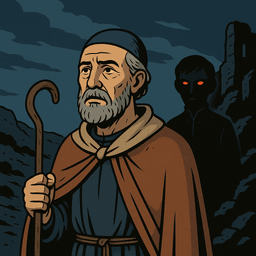
Martin of Tours, a revered bishop and one of the earliest spiritual figures in Western monasticism, believed that the end of the world was quickly approaching.
He predicted that the Antichrist would arrive and reign sometime before the year AD 400. He said:
‘that there was no doubt but that Antichrist, having been conceived by an evil spirit, was already born, and had, by this time, reached the years of boyhood, while he would assume power as soon as he reached the proper age.’
Of course, no Antichrist appeared.
AD 500
Early Church Fathers’ Chronology
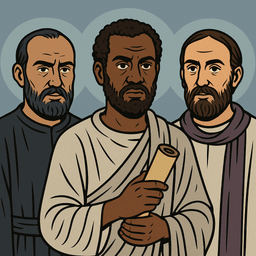
Several influential figures from the early Christian church, including Hippolytus of Rome, Sextus Julius Africanus, and Irenaeus, interpreted biblical chronology and prophecies in such a way that allowed others to see the year 500 as the anticipated end of the world.
Their calculations were often based on allegorical readings of creation accounts and the idea of a 6,000-year history for the Earth, leading to a millennial expectation.
This was not a prediction of their own, but a general interpretation of the Bible taken up by others.
As AD 500 approached, figures like Eusebius of Caesarea tried to dampen expectations. Of course, the year AD 500 came and went.
~750 AD
Abu Muslim al-Khurasani and the Abbasid Revolution

Abu Muslim al-Khurasani used Mahdist symbolism (references to the prophesied redeemer of Islam, the Mahdi) to rally support for the Abbasid Revolution, claiming that the black banners from the East were a fulfillment of a hadith (a saying or action attributed to the Islamic prophet Muhammad) predicting the arrival of the Mahdi and the end times.
While his efforts led to the overthrow of the Umayyad dynasty, they did not result in the prophesied end times.
AD 800
Eusebius of Caesarea and the 800th Year
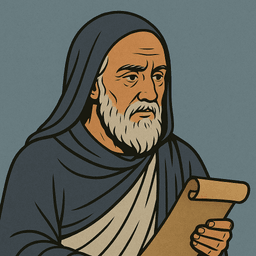
As the year AD 500 approached, Eusebius of Caesarea tried deflate millennial expectations. He argued for an adjusted Bible chronology which would imply the ‘sixth age’ (and thus the potential end of the world) wouldn’t begin until AD 799/800.
He did this by placing Christ’s birth in the world’s 5,199th year, effectively ‘rejuvenating the world’ and pushing the perceived end-date further into the future.
So this was not really a failed prediction, but an attempt to deflate earlier expectations.
Obviously, nothing occurred in AD 800 either. There’s no suggestion that Eusebius of Caesarea was claiming anything would happen.
AD 847
Thiota’s Prophecy

In the 9th century, a ‘prophetess’ named Thiota gained a significant following by proclaiming that the world would end that very year, 847, on Easter Sunday.
Her predictions caused widespread panic and fear across parts of Europe, leading many to confess their sins and prepare for the impending judgment. She also received many gifts from people.
A local bishop forced her to confess that she made it all up. She was flogged, and Easter Sunday passed without the world ending.
AD 992
Good Friday and the Feast of the Annunciation
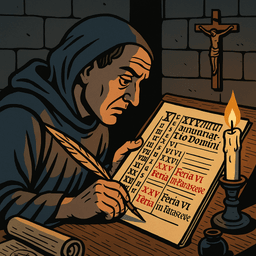
In AD 992, Good Friday and the Feast of the Annunciation both fell on March 25, 992. Medieval Christians believed that when these two events aligned, it would mark the arrival of the Antichrist, who would reign for 3-1/2 years before the end of the world.
This was based on a long-standing tradition that key moments in salvation history had all happened on that date. Panic spread across Europe, and even some monastery charters from 992 began with phrases like ‘with the end of the world approaching.’
A 10th-century monk, Abbo of Fleury, wrote:
‘a rumor had filled almost the entire world that when the Annunciation fell on Good Friday, without any question it would be the end of the world.’
Good Friday in 992 came, but the ‘Antichrist’ did not.
AD 1000
Pope Sylvester II and Millennial Fears

The approach of the year 1000 ignited widespread millennial anxieties across Christian Europe. Many interpreted biblical prophecies, especially from the Book of Revelation, to mean that Christ would return and the world would end at the turn of the millennium.
Pope Sylvester II was reportedly among those who held these fears.
Nothing happened.
1033
Various Christians

Following the unfulfilled predictions for 1000, some Christians recalculated and shifted their focus to 1033, exactly 1,000 years after Christ’s crucifixion and resurrection. This date was seen by many as a more theologically precise time for the Second Coming and the end of the world.
However, yet again, nothing happened.
1284
Pope Innocent III’s Interpretation of 666
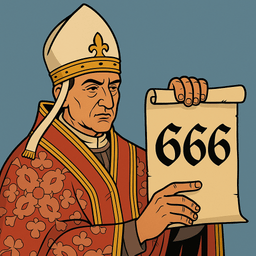
Pope Innocent III, one of the most powerful and influential popes of the Middle Ages, predicted that the world would end 666 years after the rise of Islam.
Based on his interpretation of biblical numerology and historical events, he calculated this to be the year 1284. This prediction was stated in a papal bull in April 1213, where he wrote:
‘…the end of this beast is approaching, whose number, according to the Revelation of Saint John, will end in 666 years, of which already nearly 600 have passed.’
The year 1284 passed, and Islam remained.
1492
Russian Orthodox’s Eighth Millennium
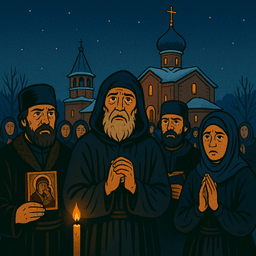
For many within the Russian Orthodox Church, the year 1492 held profound apocalyptic significance.
This date marked the beginning of the 8th millennium according to the Byzantine calendar, which was believed to correspond to the 7,000th year from creation and thus the anticipated end of the world.
While 1492 was a pivotal year, the world did not end.
1504
Sandro Botticelli

The renowned Renaissance artist Sandro Botticelli was deeply influenced by the fervent religious climate of Florence and the apocalyptic preaching of Girolamo Savonarola.
Botticelli reportedly believed that the Second Coming of Christ and the end of the world would occur in 1504.
So convinced was he of this prophecy that he allegedly burned some of his secular paintings in Savonarola’s ‘Bonfire of the Vanities’, demonstrating his profound commitment to the impending divine judgment.
The world did not end in 1504.
20 Feb 1524
Johannes Stöffler
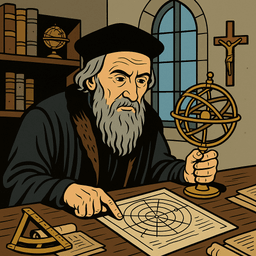
The German astronomer and astrologer Johannes Stöffler, predicted a great flood would engulf the world on this date, due to a planetary alignment.
However, only a small rain shower occurred.
1524-1526
Thomas Müntzer and Anabaptists

During the tumultuous period of the German Peasants’ War, the radical reformer Thomas Müntzer emerged as a fiery preacher of social revolution and imminent apocalypse. He, along with many Anabaptists, believed that the end of the world was at hand, with some predicting its arrival between 1524 and 1526. Müntzer envisioned a divine kingdom established through violent overthrow of the ungodly.
On May 15, 1525, at the Battle of Frankenhausen, Müntzer led his peasant army against the forces of the German princes. Despite Müntzer assuring his followers that God would intervene and that he would catch cannonballs in his sleeves, his ill-equipped army was brutally crushed. Around 5,000 out of 8,000 peasants were slaughtered, while the princes’ army suffered minimal losses.
Müntzer himself was captured hiding in an attic, tortured, and subsequently tried and executed by beheading on May 27, 1525, in Mühlhausen. His apocalyptic vision remained unrealized, and his rebellion was ultimately suppressed.
1533
Melchior Hoffman

Melchior Hoffman, a German Anabaptist and radical lay preacher born in Schwäbisch Hall, claimed that Christ’s Second Coming would take place in Strasbourg in 1533. He prophesied that 144,000 people would be saved, while the rest of the world would be consumed by fire, and that Strasbourg would become the New Jerusalem.
His failed prophecy significantly contributed to the Münster Rebellion (1533–1534). Hoffman was imprisoned in Strasbourg for his predictions and died there around 1543.
Of course, nothing happened in 1533.
19 Oct 1533
Michael Stifel

Michael Stifel, a German mathematician and former monk, anonymously published his ‘Ein Rechenbuchlin vom EndChrist. Apocalyps in Apocalypsim’ (A Book of Arithmetic about the AntiChrist. A Revelation in the Revelation) in 1532.
In it, he calculated that Judgement Day would begin at 8:00 am on October 19, 1533, based on his study of numerology and ‘word-calculation’ from the Bible.
Nothing happened.
1534
Jan Matthys and the Münster Rebellion

The city of Münster became the site of a radical Anabaptist uprising led by figures like Jan Matthys, who proclaimed Münster to be the ‘New Jerusalem’ and the stage for the imminent Second Coming.
Matthys, a baker-turned-prophet, had predicted that the world would end in 1534 and that only Münster would be spared.
The city was besieged by Franz von Waldeck, its expelled prince-bishop. On Easter Sunday in April 1534, Matthys, who had prophesied God’s judgment would come that day, attacked with twelve followers, believing he was a second Gideon. However, Matthys was cut off with his entire band, and he was killed, dismembered, and his head was stuck on a pike, with his genitals nailed to the city door.
The Second Coming didn’t happen.
1555
Pierre d'Ailly

Around 1400, French theologian Pierre d'Ailly wrote that 6,845 years of human history had already passed, and the end of the world would be in the 7,000th year, which he calculated to be 1555.
Nothing happened in 1555.
1585
Michael Servetus

Michael Servetus, a Spanish theologian and physician, held many strong beliefs in contradiction to the Catholic Church, including that the millennium and the end of the world would commence around 1585.
Then, in 1553, he was famously executed for heresy in Geneva after being condemned by the city’s council, with John Calvin advocating for his execution.
No end came in 1585.
1600
Martin Luther
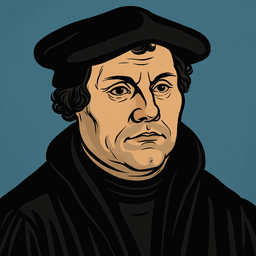
The prominent leader of the Protestant Reformation, Martin Luther, believed that the end of the world was very near.
His theological interpretations, particularly of the Book of Daniel, and his calculation that the world was approaching its 6,000-year mark, led him to anticipate the final judgment and the Second Coming of Christ around the year 1600. Luther saw the rise of the Ottoman Empire and the papacy as signs of the Antichrist and the impending culmination of history.
Of course, 1600 passed with no apocalypse.
1655-1657
Fifth Monarchists

The Fifth Monarchists were a radical millenarian group active during the English Civil War.
They believed that the four earthly monarchies prophesied in the Book of Daniel had already passed, and that the fifth, the kingdom of Christ, was about to be established on Earth.
Many members anticipated this divine kingdom to commence between 1655 and 1657, leading to fervent political and religious activism. Their attempts to bring about this kingdom through armed insurrections ultimately failed, and their movement was suppressed.
1656-1658
Christopher Columbus

Even the explorer Christopher Columbus was deeply invested in apocalyptic prophecy.
Towards the end of his life, he wrote his Book of Prophecies, where he interpreted biblical texts and his own discoveries to predict the end of the world. He calculated that the world would end around 1656 or 1658, believing that his voyages were a divinely ordained step towards the evangelization of all nations before the Second Coming.
He died in 1506, and his predicted dates came and went.
1666
Various Christians

Some interpreted the number 666 as signifying the end of the world in this year, especially after the Great Fire of London in September 1666.
The presence of the number 666 in the date, combined with the earlier outbreaks of the bubonic plague in 1665 and the devastating fire, led many to believe these events were signs of the impending apocalypse, as prophesied in the Book of Revelation.
Sabbatean Movement

The Sabbatean movement, led by Shabbetai Zevi, a Jewish mystic who proclaimed himself the Messiah, caused immense fervor across the Jewish world.
Many of his followers believed that the redemption would occur in 1666, a year interpreted by some as numerically significant (from the Book of Revelation’s 666, despite it being a Christian book). This widespread expectation led to profound spiritual and social upheaval.
The movement ultimately ended in widespread disillusionment and the collapse of these messianic hopes when Zevi converted to Islam under duress in September 1666, and, of course, no apocalypse occurred.
1688 or 1700
John Napier

The Scottish mathematician John Napier predicted that the end of the world would occur in either 1688 or 1700, based on his calculations from the Book of Revelation, which he published in his work A Plaine Discovery of the Whole Revelation of St. John (1593).
Of course, 1688 and 1700 came and went.
1700
Henry Archer
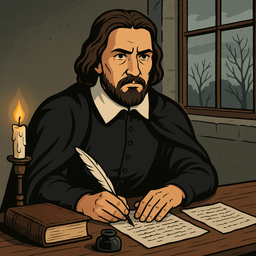
In the 1600s, Henry Archer, an English writer and theologian, gained notoriety for his specific apocalyptic predictions.
Drawing from his interpretations of biblical chronology and prophecy, Archer confidently predicted that the world would come to an end in the year 1700. This, and other predictions, were published in his book, The Personall Reigne of Christ Upon Earth.
He died circa 1642, never seeing if his predictions came to pass, but his writings contributed to a wave of eschatological speculation in England, with his book peaking in popularity in the 1650s.
1705-1708
Camisards

The Camisard prophets from France predicted the end of the world would occur in either 1705, 1706 or 1708.
Of course, none of these dates came to pass.
1710 or 1715
Pierre Jurieu
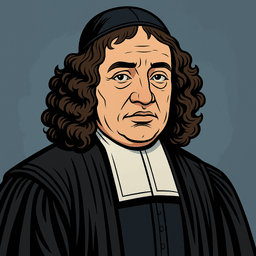
The French protestant leader Pierre Jurieu, writing in his Accomplissement des prophéties (1686), speculated that the fall of the Papacy (whom he identified as the Antichrist) would occur in the early 18th century, in ‘1710 or 1715’.
He interpreted the 1260-year prophetic period from Revelation as beginning around the rise of papal power (circa the 5th century) and thus ending ‘soon’.
The papacy, of course, did not fall in the early 18th century, and continues to this day.
1792/1794
The Shakers

The Shakers, formally known as the United Society of Believers in Christ’s Second Appearing, were a millenarian restorationist Christian sect.
They believed in the imminent return of Christ and the establishment of a new millennial age.
While not setting a precise date, their early teachings and hymns often hinted at the expectation of significant apocalyptic events around 1792 or 1794. Their fervent worship and communal living were driven by this belief in a rapidly approaching new heaven and new earth.
1793, 1794, 1800
Richard Brothers

Richard Brothers was one of the early promoters of British Israelism (the belief that the British are the so-called ‘lost’ ten tribes of Israel).
He predicted that the end of the world would occur in 1793, 1794, and 1800.
Of course, none of these dates came to pass, and sadly he spent most of the end of his life in a mental asylum.
1805
Christopher Love

In 1651, Christopher Love, a prominent English Puritan minister, was executed for his alleged involvement in a plot against the then dictator of England, Oliver Cromwell, to overthrow him and restore the monarchy.
However, before his death, he made several predictions regarding future events, including the precise year of the world’s end.
He prophesied that the apocalypse would occur in 1805, based on his interpretations of biblical prophecy. His followers, though diminished by his execution, continued to uphold his prophetic pronouncements.
Of course, 1805 came and went.
1836
Johann Albrecht Bengel
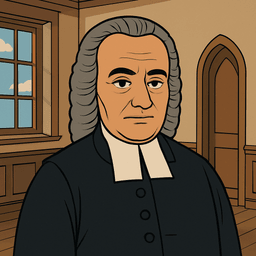
Johann Albrecht Bengel, a German Lutheran clergyman and biblical scholar, dedicated much of his life to eschatological studies.
Through intricate calculations based on the Book of Revelation, Bengel predicted that the end of the world and the second coming of Christ would take place on June 18, 1836.
His detailed chronological schema gained a significant following, influencing various Pietist and Adventist movements, but 1836 saw no second coming.
John Wesley
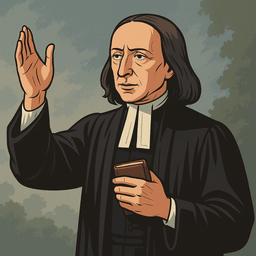
The founder of Methodism, John Wesley, was not immune to apocalyptic speculation. While primarily focused on spiritual revival and social reform, he also engaged with eschatological texts.
In his Notes on the New Testament, Wesley suggested that the ‘beast’ of Revelation represented the Papacy and would rise to power in 1836, which he believed would usher in the end times.
Although he did not set a firm date for the world’s end, his interpretation fueled expectations among some of his followers for significant prophetic fulfillments around that year. Of course, 1836 came and went without any especially significant events.
March 1843-March 1844
William Miller’s Predicts Jesus’ Return
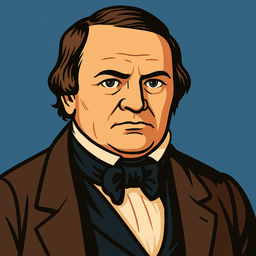
The Baptist preacher William Miller predicted Christ’s return between March 1843 and March 1844.
His calculations were based on wrong assumptions and a flawed Biblical chronology from corrupted manuscripts. Yet, his chronology would later be reinterpreted and adopted by other groups.
October 22, 1844
The Great Disappointment

The year 1844 is synonymous with The Great Disappointment, a pivotal event for the Millerite movement in America.
After the failure of William Miller’s prediction of Christ’s return between March 1843 and March 1844, he adjusted it to a new date: October 22, 1844.
Thousands of believers eagerly awaited the Second Coming. When the date passed without incident, it led to immense disillusionment and the collapse of the movement, though it also spurred the formation of new Adventist denominations.
1862
John Cumming
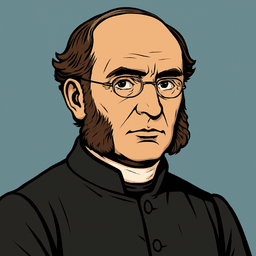
John Cumming, a popular Scottish clergyman and author, was known for his strong anti-Catholic views and his detailed apocalyptic interpretations. He calculated that the world would end in 1862, publishing his predictions in widely-read books.
Cumming believed that the events of his time, combined with his understanding of biblical prophecy, pointed unmistakably to this date for the final judgment.
The year 1862 passed without any apocalypse.
1873
Jonas Wendell

Jonas Wendell, an Adventist preacher, became a prominent voice in the post-Millerite Adventist movement.
After the Great Disappointment, he re-examined biblical chronology and concluded that Christ’s second advent would actually occur in either 1868 or 1873/1874. He published his predictions in a booklet entitled, The Present Truth.
He died in 1874, not seeing the Second Coming.
His preaching inspired Charles Taze Russell to make his own predictions for 1914.
1881-1898
Al-Mahdi al-Sudani

In Sudan, Muhammad Ahmad ibn Abd Allah, declared himself the Mahdi (a prophesied redeemer of Islam) and claimed the Dajjal (an anti-Messiah figure in Islamic eschatology) would soon appear, signifying the imminent end.
Some of his followers believed the end would come in 1300 AH (1882–1883 CE), based on apocalyptic hadith (sayings attributed to Muhammad) and symbolic calculations of Islamic years.
Citing political chaos and European colonialism as signs of the ‘End of Days,’ he gained a massive following and initially defeated British and Egyptian forces. However, he was killed in 1885, and the predicted apocalypse did not occur, though his state lasted a bit longer.
1892-1911
Charles Piazzi Smyth and the Great Pyramid

Charles Piazzi Smyth, a Scottish astronomer and enthusiastic pyramidologist, believed that the Great Pyramid of Giza contained divine prophecies encoded in its dimensions.
He interpreted various measurements within the pyramid to predict specific dates for significant biblical events, including the Second Coming of Christ and the end of the age. His calculations, often spanning from 1892 to 1911, were highly influential among some eschatological groups.
His predictions were not fulfilled.
Late 19th Century
Mirza Ghulam Ahmad (Ahmadiyya Movement)

Mirza Ghulam Ahmad, the founder of the Ahmadiyya Movement, claimed to be the metaphorical second coming of Jesus and the Mahdi (a prophesied redeemer of Islam).
He rejected violent religious war (jihad) and interpreted spiritual decay and Christian colonialism as signs of the end times, though he did not set an exact date for the world’s end.
He died in 1908, but the movement he founded would continue to grow and influence Islam.
1914
Charles Taze Russell’s Predictions
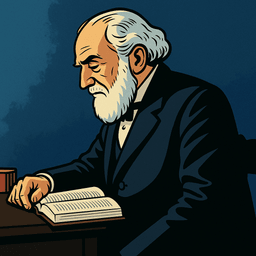
Charles Taze Russell, the founder of the Bible Student movement (the precursor to Jehovah’s Witnesses), made numerous predictions about the end times.
He initially taught that Christ’s invisible presence began in 1874 and that the year 1914 would mark the end of the ‘Gentile Times’ and the complete establishment of God’s kingdom on Earth, the abolition of all human governments, and the resurrection of the righteous dead.
None of these predictions came true, and Russell died in 1916.
1925
Joseph F. Rutherford’s Prediction

After 1918, Joseph Franklin Rutherford, the new leader of the Bible Student movement (which later became Jehovah’s Witnesses), put forward a new and highly publicized prediction for 1925.
He confidently asserted that in this year, biblical figures like Abraham, Isaac, Jacob, and King David would be resurrected to life on Earth. This prophecy, detailed in his book Millions Now Living Will Never Die, generated fervent expectation; many believers sold their homes and abandoned their jobs.
They even built a mansion in San Diego, California, to house the expected resurrected biblical figures.
The unfulfilled prophecy caused widespread disillusionment and a significant decline in membership. However, at least the giant mansion did not go to waste, as Rutherford used it as his own personal home when not living in New York.
1926
Spencer Perceval and the Catholic Apostolic Church
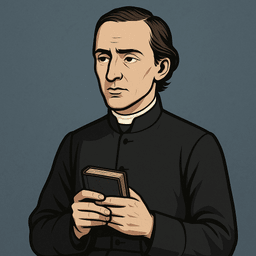
Spencer Perceval, the son of the Prime Minister of the United Kingdom of the same name (who was famously assassinated), became a leading figure in the Catholic Apostolic Church.
This millenarian movement believed in the restoration of apostles and prophets and the imminent return of Christ.
While Perceval’s prophecies were not directly about the end of the world, the Catholic Apostolic Church, deeply influenced by prophetic interpretations, anticipated significant end-time events to culminate around 1926.
Before 1934 or 1935
Assemblies of God Church

In their official publication The Weekly Evangel, the Assemblies of God speculated that the end would come before the end of World War One:
‘We are not yet in the Armageddon struggle proper, but at its commencement…Christ will come before the present war closes…The war preliminary to Armageddon…has commenced.’
Then they speculated that the end would come before 1934 or 1935.
1936
Herbert Armstrong’s First Prediction

Herbert W. Armstrong, the American founder of the ‘Worldwide Church of God,’ (now Grace Communion International) made multiple predictions concerning the end times.
His initial prophecy for the apocalypse was set for 1936. Armstrong, a prolific radio evangelist and author, interpreted biblical prophecies, particularly those concerning the ‘Great Tribulation,’ to arrive at this date.
The year came and went, with no apocalypse.
1943
Herbert Armstrong’s Second Prediction
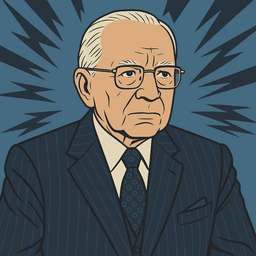
After his unfulfilled prediction for 1936, Herbert W. Armstrong, the American leader, revised his chronological calculations and set a new date for the end of the world: 1943.
That didn’t happen either.
World War Two continued for another two years.
Armstrong would soon make a third failed prediction.
1967
Jim Jones and Peoples Temple
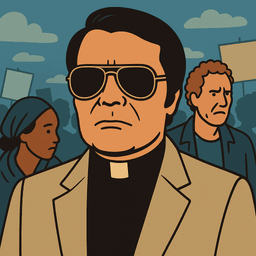
Jim Jones, the charismatic and ultimately destructive leader of the American Peoples Temple, utilized apocalyptic fears to control his followers.
He initially prophesied a nuclear apocalypse in 1967, which he claimed would destroy the world. Jones established a commune in Redwood Valley, California, as a supposed safe haven from the impending catastrophe.
When 1967 passed without the predicted destruction, Jones incrementally shifted his prophecies and relocated his followers, eventually leading to the mass murder-suicide in Jonestown in 1978.
1974
‘Ice Age’ Already Starting

In 1974, Time magazine reported on that the first signs of an ice age ‘show no indication of reversing’. The ‘telltale signs are everywhere’, it stated.
Additionally, The Guardian reported on ‘worldwide and rapid trends towards a mini Ice Age’, according to a ‘preliminary analysis’ at Columbia University.
There was no evidence of an ‘Ice Age’ starting. It was nonsense.
1975
General Famine Prediction (Paul R. Ehrlich)

American Stanford ecologist Paul R. Ehrlich predicted a ‘catastrophic global famine by the mid-1970s’, specifically stating:
‘…hundreds of millions of people are going to starve to death in the 1970s.’
Thankfully, by the end of the 1970’s, world food production had reached record highs thanks to advances in technology, specifically in the use of oil-based fertilizers.
Herbert Armstrong’s Third Prediction
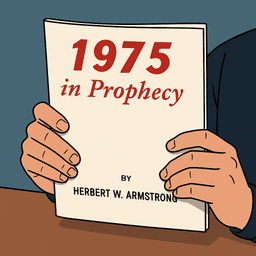
Undeterred by previous failed predictions in 1936 and 1943, Herbert W. Armstrong, the American founder of the Worldwide Church of God, published a booklet titled ‘1975 in Prophecy!’ in 1956.
While the title suggested 1975, his calculations often pointed to 1972 as the year when the Great Tribulation would begin, leading to the end of the world around 1975 after a 3.5-year period.
This date was also tied to his ‘19-year time cycles’ and ‘Times of the Gentiles’ interpretations.
Both 1972 and 1975 passed without the Great Tribulation appearing.
Jehovah’s Witnesses’ 1975 Prediction

Jehovah’s Witnesses also calculated that 6,000 years of human history would end in 1975, strongly suggesting that Armageddon would come in that year, ushering in the Millennial Reign of Christ.
Many ordinary Jehovah’s Witnesses sold their homes or put off education or training to prepare for the end of the world, believed to come some time around October.
Their in-house scholar, Fred Franz (pictured), was primarily responsible for this prediction. Despite his failure leading to a temporary drop in membership, he was later promoted to become their organization’s leader.
Franz died in 1992, never seeing Armageddon, and the world continued on.
Both Herbert Armstrong and Fred Franz used a deeply flawed Bible chronology.
1977
John Wroe and the Christian Israelite Church

In the 1800s, John Wroe, the self-proclaimed prophet and founder of the Christian Israelite Church, made numerous apocalyptic predictions.
Based on his interpretations of biblical prophecy and visions, in 1823, Wroe predicted that the end of the world would occur in 1977. His followers, who believed him to be a successor to the prophet Elijah, held firm to his pronouncements and lived according to his strict communal and ascetic rules.
He died in 1863. The year 1977 passed without incident, but in 1993 the story of his womanizing was made into a TV miniseries.
1979-1980
Juhayman al-Otaybi and the Grand Mosque Seizure

In 1979, Juhayman al-Otaybi led the seizure of the Grand Mosque in Mecca, declaring his brother-in-law, Muhammad al-Qahtani, to be the Mahdi (a prophesied redeemer of Islam).
His followers believed the end was imminent, possibly in 1400 AH (1979–1980 CE), marking the start of end-time events.
The uprising was crushed by the Saudi government, al-Qahtani was killed, and the end time did not begin.
1980
America Subject to Food Rationing (Paul R. Ehrlich)

According to American ecologist Paul R. Ehrlich, as reported in the Redlands Daily Facts (October 6, 1970), America would be subject to ‘water rationing’ and ‘food rationing’ by 1980.
No water or food rationing has taken place.
1982
Pat Robertson

American televangelist Pat Robertson, founder of the Christian Broadcasting Network (CBN), famously predicted the end of the world in 1982.
In a 1980 broadcast of The 700 Club, Robertson stated:
‘I guarantee you by the end of 1982 there is going to be a judgment on the world.’
He cited biblical prophecies and interpreted geopolitical events as signs of the impending apocalypse. His prediction, broadcast to millions, generated significant discussion and concern among his followers.
And nothing happened.
1988
World Mission Society Church of God (Ahn Sang-hong)

The World Mission Society Church of God, a South Korean new religious movement, holds that their founder, Ahn Sang-hong, is the second coming of Christ.
He predicted that the end of the world would occur in 1988, exactly 40 years (one generation) after the modern State of Israel was established.
He died in 1985, and nothing happened in 1988.
1988/89/93
David Berg and the Children of God

David Berg, the founder and leader of the controversial American religious group the Children of God (later known as The Family International), made a series of shifting apocalyptic predictions.
He initially prophesied that the Great Tribulation and the end of the world would occur in 1988, followed by a new date in 1989, and then again in 1993. Berg’s teachings often included predictions of global catastrophes and the imminent return of Christ, which he used to encourage his followers to isolate themselves from society and live communally.
His group has been condemned as a cult, and accused of systemic child abuse.
1989
Disappearance in Blue Steam (Paul R. Ehrlich)

In the New York Times (August 10, 1969), American ecologist Paul R. Ehrlich predicted that ‘everyone would disappear in a cloud of blue steam’ by 1989 due to environmental pollution.
No blue steam appeared, and everyone is still here.
1991
Nation of Islam and the Gulf War

Louis Farrakhan, the American leader of the Nation of Islam, issued a prominent apocalyptic warning during the lead-up to the Gulf War in 1991.
He claimed that the conflict would escalate into a global war, specifically citing a prophecy that America would be destroyed by a ‘wheel’ or UFO during the war.
The United States and its allies won the Gulf War.
October 28, 1992
Dami Mission
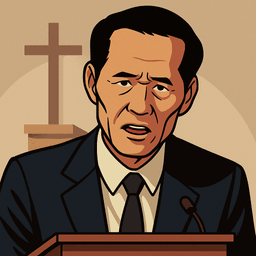
The South Korean Dami Mission, founded by Lee Jang Rim, gained widespread attention for its prediction of the Rapture and the end of the world on this date.
Thousands of followers quit jobs, sold possessions, and even underwent abortions in preparation.
The Rapture did not come, and Lee was arrested for fraud.
Before 1994
Chabad-Lubavitch

Within the Chabad-Lubavitch Hasidic movement, particularly in the late 20th century, strong messianic expectations emerged surrounding their late spiritual leader, Rabbi Menachem Mendel Schneerson.
Many followers believed he would be revealed as the Messiah and usher in the Messianic Era, leading to intense anticipation and activism. While no specific end-of-the-world date was proclaimed, there was widespread fervent belief in his imminent revelation as Messiah. However, he died in 1994.
September 6, 1994
Harold Camping’s First Predictions

Harold Camping, an American Christian radio broadcaster and president of Family Radio, gained significant notoriety for his repeated and highly publicized predictions of the end of the world.
His initial prediction was for the Rapture and the Day of Judgment to occur on September 6, 1994. Then it was moved to September 29.
Camping based his calculations on intricate numerical interpretations of biblical passages, which he presented as irrefutable proof.
When the date passed with no Rapture, he attributed the failure to a misinterpretation of a specific biblical phrase, and set a new date.
1995
Harold Camping’s Further Predictions

Following the disappointment of September 1994, Harold Camping, the American radio broadcaster, revised his end-time calculations and announced a new date for the world’s end:
March 31, 1995.
He continued to broadcast his message, assuring his followers that the previous error had been corrected and that this time, the Rapture was certain.
Again, nothing happened.
Then he changed it to October 2, 1995.
Yet again, nothing happened.
Camping would make one last prediction later, in 2011.
March 1997
Heaven’s Gate Mass Suicide

The leader of Heaven’s Gate, Marshall Applewhite, convinced his followers that the end of the world was imminent and that salvation lay in shedding their human bodies to ascend to a spaceship trailing the Comet Hale–Bopp.
In March 1997, Applewhite led 38 of his followers in a mass suicide in order for their souls to join the alien vessel.
The comet came and went, and no spaceship was detected.
July 1999
Nostradamus and the ‘King of Terror’

The 16th-century French astrologer and physician Nostradamus has been widely interpreted over centuries, with many attempting to connect his cryptic writings to specific historical events.
One of his most famous prophecies, often translated as ‘the King of Terror’ descending from the sky in July 1999, led to widespread fears of a millennial apocalypse. This particular interpretation fueled numerous books, documentaries, and public anxieties as the year approached.
The ‘King of Terror’ never showed up.
September 1999
Philip Berg and the Kabbalah Centre

Philip Berg, the dean of the worldwide Kabbalah Centre, predicted that a cataclysmic event, potentially a global earthquake, would occur in September 1999.
Berg, who taught a modern interpretation of Jewish mysticism, based his prediction on his understanding of ancient Kabbalistic texts and astrological alignments. His followers were encouraged to take protective measures and prepare for the impending disaster.
September 1999 passed without incident.
2000
Isaac Newton’s Prediction

Even the great scientist Isaac Newton, known for his groundbreaking work in physics and mathematics, was deeply engrossed in biblical prophecy.
In his unpublished theological writings, particularly Observations upon the Prophecies of Daniel, and the Apocalypse of St. John, Newton meticulously calculated that Christ’s Millennial reign would begin in the year 2000, with the fall of the ‘Beast’ in 1867.
United Nations: Entire Nations Wiped Off the Earth

In 1989, the United Nations Environment Programme (UNEP) warned that ‘entire nations could be wiped off the face of the earth’ by 2000, due to rising sea levels.
They also predicted that ‘coastal flooding and crop failures’ would cause waves of ‘eco-refugees’, specifically over 20 million people would flee Bangladesh.
None of it happened.
Y2K Bug

Widespread panic arose over the ‘Y2K Bug’ (also known as the Millennium Bug), a computer flaw where older software programs, designed to save space, represented years with only two digits (e.g., ‘99’ for 1999) rather than four.
Many feared that when the year changed from ‘99’ to ‘00’, computers would interpret this as 1900, causing widespread system failures, leading to societal collapse and chaos.
Nothing much happened. Partially this was because of a widespread effort to fix these bugs, but it was mostly because the fears were grossly exaggerated by people who didn’t understand computers.
April 2000
James Harmston and the True and Living Church
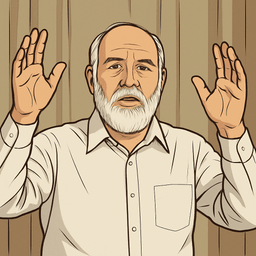
James Harmston, the leader of the American True and Living Church of Jesus Christ of Saints of the Last Days, a Mormon fundamentalist offshoot, predicted that Christ would return to Independence, Missouri, in April 2000.
Harmston, who claimed to be a prophet with direct revelations, instructed his followers to gather at their compound in Manti, Utah, to await the Second Coming. This prediction was part of a broader millenarian belief system within the group.
When the date passed without incident, it led to Harmston being sued for fraud as they failed to see Jesus.
They were awarded $300,000 in damages, later reduced to $60,000 on appeal.
After 2000
‘Children Won’t Know What Snow Is’ Prediction

The Independent newspaper published a prediction by ‘senior research scientist’ David Vidner at the University of East Anglia. He stated that ‘in a few years’ British children would no longer know what snow is, due to global warming.
Britain went on to see heavy snowfalls in 2005, 2009, 2010, 2011, 2013, 2018, 2022, and 2023. Some were the heaviest in over 70 years.
April 29, 2007
Pat Robertson’s Second Prediction
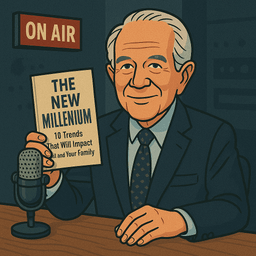
American televangelist Pat Robertson made another notable prediction in his book The New Millennium, published in 1990.
Robertson suggested that God had revealed to him that the world would face a series of catastrophic events leading to its end by this year. He cited biblical prophecies and interpreted geopolitical events as signs of the impending apocalypse.
The year 2007 passed without any apocalyptic events.
2009
‘Fifty Days to Save Our Planet’

The then British Prime Minister, Gordon Brown, stated that there were fewer than 50 days ‘to save our planet from catastrophe’, referring to climate change.
The 50 days passed without incident.
September/October 2011
Harold Camping’s Final Prediction
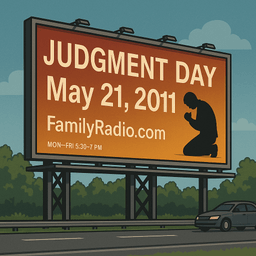
After numerous failed predictions, Harold Camping announced his most definitive and widely publicized date for the Rapture: May 21, 2011, followed by the complete destruction of the world on October 21, 2011.
His Family Radio network spent millions on billboards and advertising, urging people to prepare for the end. When May 21st passed uneventfully, Camping claimed a ‘spiritual’ rapture had occurred and insisted the physical end would still come in October.
Nothing happened.
May 2011
Planetary Alignment Prediction

In May 2011, a series of planetary conjunctions involving Mercury, Venus, Mars, and Jupiter led to renewed apocalyptic fears. Some, like Christian radio host Harold Camping, who had predicted the world’s end for May 21, 2011, saw these celestial events as signs of the impending Rapture and global destruction.
Despite the visual spectacle of the planets appearing close together, astronomers argued that such alignments have no gravitational impact on Earth and do not herald the end of the world.
Indeed, the planetary alignment had no noticeable effect on anything.
2010s
ISIS & End-Time Prophecy
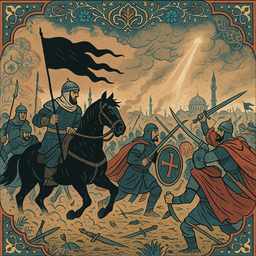
The Islamic State of Iraq and Syria (ISIS) actively promoted the Malhama Kubra (the ‘Great Battle’ or ‘Armageddon’ in Islamic eschatology) as imminent.
They literally interpreted Dabiq (a small town in Syria) as the prophesied site of the final battle.
No great battle has yet taken place in Dabiq. It is currently under the control of the Turkish army.
2012-Present
Islamic Social Media Influencers

Some Muslim social media influencers on platforms like TikTok and YouTube have gained traction by making sensational end-times predictions.
They link global warming, AI, solar flares, COVID-19, and the war in Ukraine to prophecies of al-Dukhan (the Smoke), the Sun rising in the West, Gog and Magog, or Mahdi prophecies.
These sensationalist claims are entirely unsupported by Islamic scholars and are largely forgotten when they don’t come true.
2012
Famine Prediction (George Monbiot)

In December 2002, The Guardian columnist George Monbiot wrote that:
‘Within as little as 10 years, the world will be faced with a choice: arable farming either continues to feed the world’s animals or it continues to feed the world’s people. It cannot do both.’
He argued that famine could only be avoided if the rich world adopted a broadly vegan diet.
By 2012, the world food supply continued its record-breaking upward trend.
December 21, 2012
Mayan Calendar End-Date Prediction
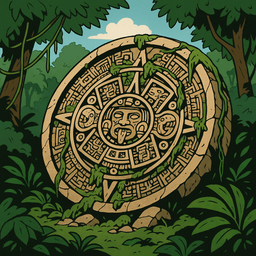
Misinterpretations of the Mesoamerican Long Count calendar, particularly its supposed ‘end-date’ on December 21, 2012, led to widespread apocalyptic fears.
While the calendar simply completed a cycle, similar to a odometer rolling over, many believed it predicted the end of the world, global catastrophes, or a major spiritual transformation.
These beliefs were fueled by popular culture and various New Age interpretations, despite Mayan scholars clarifying that the date merely marked a new cycle.
The date passed without incident.
~2012-2023
California’s Persistent Drought and the ‘New Normal’

Following a severe drought in the early 2010s, California experienced another significant dry period throughout much of the ~2010s and early 2020s. Experts and public officials frequently suggested that the state was entering a ‘new normal’ due to climate change.
Then, in the winter of 2022-2023, a series of powerful atmospheric rivers delivered record-breaking amounts of rain and snow, replenishing reservoirs and ending the drought.
2013
Rasputin’s Alleged ‘Fire’ Destroying the World
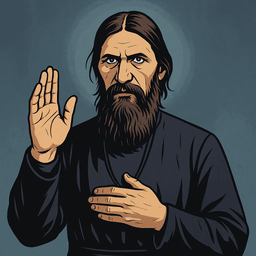
Various ‘prophecies’ have been posthumously attributed to the famous Russian mystic Grigori Rasputin. This includes an alleged prediction that a catastrophic fire would destroy most life on Earth in 2013.
These ‘prophecies’ are not directly verifiable from his writings or historical records. Nevertheless, this supposed 2013 prediction gained some traction in popular culture and among conspiracy theorists for a time.
The year passed, and no ‘fire’ destroyed the world.
During the Reign of Pope Francis (~2013 onwards)
Saint Malachy’s Prophecy Reinterpreted

The medieval ‘Prophecy of the Popes,’ traditionally attributed to Saint Malachy, is supposedly a list of all the popes that will come before the end.
According to the numbers listed, Pope Francis would be the last pope, meaning he would preside over apocalyptic events leading to the Second Coming.
Pope Francis died in April 2025, and he was replaced by Pope Leo XIV.
No apocalypse occurred. The ‘prophecy’ is widely considered a medieval hoax.
2014-2016
Models Suggest An Ice-Free Arctic (Al Gore)

In 2009, former US Vice President Al Gore warned that:
‘Some of the models suggest that there is a 75 percent chance that the entire north polar ice cap during some of the summer months will be completely ice-free within the next five to seven years.’
Five to seven years means 2014-2016.
What actually happened? While the ice cover did decrease, by 2016 it had slightly increased again and stabilized, where it has remained ever since.
2015
‘Only 500 Days Before Climate Chaos’ Prediction

In 2014, the then French Foreign Minister Laurent Fabius stated there were only 500 days before ‘climate chaos’ would ensue.
That would have placed the ‘chaos’ in 2015.
The climate refused to cooperate, and nothing happened.
2015
Arctic Ice-Free by 2015 Prediction

In 2013, the world’s most prestigious scientific journal, Nature, published a paper claiming that the Arctic could be ice-free by 2015.
In 2015, the Arctic ice was at about 5 million square kilometers at its lowest point, about average for the decade, and roughly the same size as the European Union.
2016
Arctic Ice-Free by 2016 Prediction

In 2013, the US Navy claimed that the Arctic could be ice-free by 2016.
The ice level reached it’s lowest point with just under 5 million square kilometers, about half the size of the continental United States.
2017
Prince Charles’s ‘96 Months’ Warning

In 2009, the then Prince of Wales (now King Charles III) stated there were only ‘96 months’ (8 years) to prevent an ‘irretrievable climate and ecosystem collapse’.
His deadline passed in 2017, and global harvests continued to rise to record levels.
2018
Maldives Submergence Prediction

According to Agence France Press (September 26, 1988), the Environmental Affairs Directory of the Maldives warned that many of his nation’s islands would be underwater by 2018.
They also claimed that the country would run out of drinking water by 1992.
Neither happened.
2019
New York City’s West Side Highway Underwater

In 1988/89, climatologist James Hansen infamously predicted that sea level rise would accelerate so quickly that New York City’s West Side Highway could be underwater by 2019.
New York remains above sea level, and the West Side Highway is still there.
2020
European Cities ‘Sunk Underwater’ and Britain to Have ‘Siberian Climate’

In 2004, the US Pentagon warned that several major European cities could be sunk underwater and Britain could have a ‘Siberian climate by 2020’.
Britain went on to have it’s hottest summer on record in 2022.
Jehovah’s Witnesses and COVID-19

When the COVID-19 pandemic began, the Governing Body of Jehovah’s Witnesses stated that the outbreak was evidence that:
‘…we’re living in the final part of the last days, undoubtably, the final part of the final part of the last days, shortly before the last day.’
Members were encouraged to see the global crisis as a sign that the ‘Great Tribulation’ (a period of intense global distress leading to Armageddon) was imminent.
The pandemic ran its course, and the event is now just a memory. One could say that the world lived to see another day.
2021
Muslim Televangelist’s 2021 Prediction

Turkish Muslim televangelist Adnan Oktar frequently referenced 2021 as a key date for the Mahdi’s rule to begin and for world peace to follow, claiming global Islamic unity would occur by then.
While the Mahdi did not return in that year, 2021 was an eventful year for Adnan Oktar; he was sentenced to 1,075 years in prison for cult activities, fraud and other crimes, including sexual abuse. He denies all allegations.
In 2022, his sentence was increased to 8,658 years.
NASA Scientists’ Ice Age Prediction

Back in 1971, NASA scientist S. Ichtiaque Rasool and Stanford University researcher Stephen H. Schneider said that ‘in the next 50 years’, ‘dust’ put into the atmosphere by humans could ‘trigger an ice age’.
Their claims, which would point to 2021, were published in the peer-reviewed journal Science.
Nothing happened.
2022
Extinction Rebellion: Food System Collapse

In 2019, during in a BBC Radio 4 interview, a co-founder of the British environmental activist group Extinction Rebellion predicted that the food system would collapse in three years due to climate change. That would mean by 2022.
She later clarified that it was overstated and just a possibility.
Thankfully the world food system did not collapse, but a new all-time record was set in worldwide rates of obesity.
June 21, 2023
Greta Thunberg: All Humanity To Be Wiped Out

On June 21, 2018, Swedish climate activist Greta Thunberg publicly shared an article that, perhaps unknown to her, grossly misquoted a scientist as saying:
‘climate change will wipe out all of humanity unless we stop using fossil fuels over the next five years.’
That would put the deadline at June 21, 2023. The five years expired with no sign of the world ending.
July 5, 2025
Ryo Tatsuki’s ‘Disaster’

Japanese manga artist and psychic Ryo Tatsuki, known for her eerily accurate past predictions, foretold a major ‘great disaster’ to strike Japan on July 5, 2025.
This prediction, outlined in her best-selling comic The Future I Saw, led to significant public concern and even cancellations of travel to Japan.
Thankfully, nothing happened.
September 23-24, 2025
#RaptureTok2025

Social media users, especially on TikTok, YouTube, and X, claimed the rapture would occur on September 23/24, 2025, linking it to the Jewish Feast of Trumpets and discussions on a two-state solution for Israel-Palestine.
Influencers amplified these claims, often using ‘rapture math’ to pinpoint the date, urging followers to prepare. One South African pastor claimed to have had the date revealed to him by Jesus in a vision.
Nothing happened.
January 22, 2031
Alexandria Ocasio-Cortez: ‘The World Is Going to End’

On January 22, 2019, popular U.S. politician Alexandria Ocasio-Cortez stated that:
‘the world is going to end in 12 years if we don’t address climate change.’
This implies an end-date of January 22, 2031, if no action is taken. At the time of writing, there is still no sign of the world ending in 2031.
2070
New Ice Age by 2070 Prediction

In 1972, the National Oceanic and Atmospheric Administration (NOAA) predicted a new ice age would occur by 2070.
There is no sign of it coming.
Timelines: Bible History
-

-

-

-

-
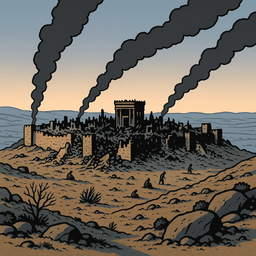
Timelines: Doctrines
-
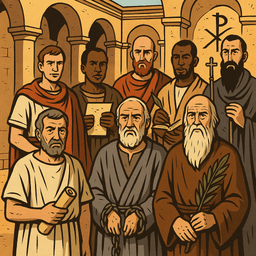
-

-

-
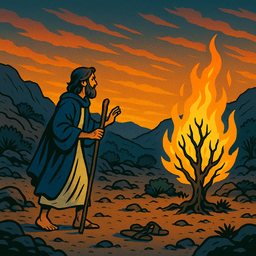
Timelines: Miscellaneous
-
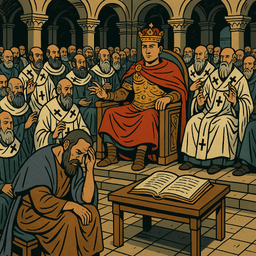
-

-
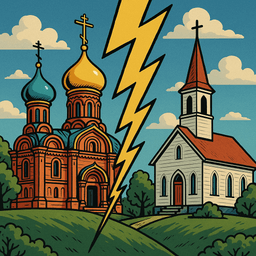
-

Also see our Articles index and our About section.